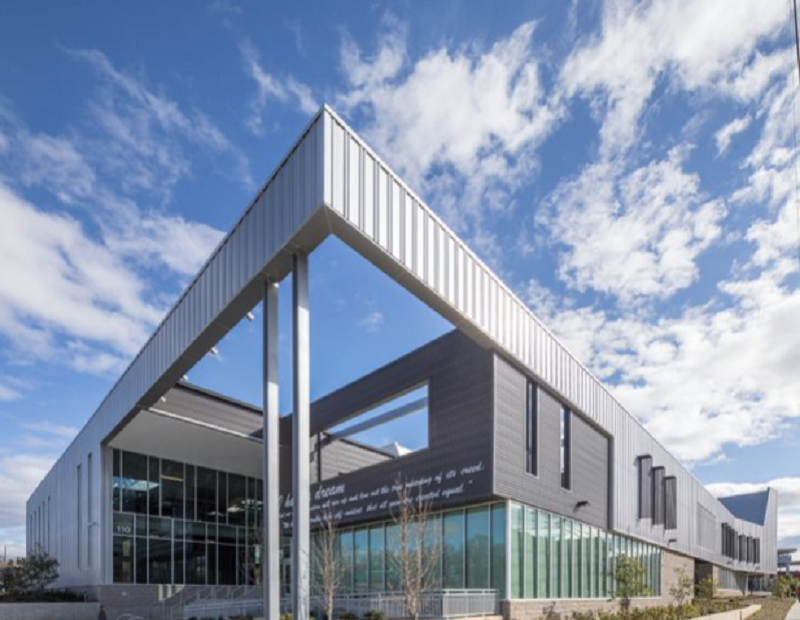Transforming Communities Through Wellness-Focused Recreational Spaces
A conversation with KAI Enterprises Principal & Market Leader Mike Pratl about how community spaces that encourage small gatherings could look in the post-pandemic world.
The coronavirus lockdown has brought forward a significant challenge for recreational spaces as well as the majority of small-gathering community places such as libraries, training centers, clubhouses, small gyms or business centers. In order to continue to make some of their activities available, local authorities had to find ways to either reinvent the spaces or offer additional services that would still engage the community while being mindful of health and wellness guidelines.
READ ALSO: Coronavirus Places Premium on Healthy Buildings
How will they look and function in the future, given that people are expected to avoid smaller places that tend to get crowded? How can a recreational space continue to serve and inspire a community? KAI Enterprises Principal & Market Leader Mike Pratl offers answers to these questions, as well as to what kind of recreational spaces are expected to be more popular going forward.
What kind of projects/spaces do you think communities/neighborhoods will need more of going forward?
Pratl: We have been seeing a trend toward more remote participation in activities like E-Sports, which is a multiplayer video game competition. We are currently working on a community center design where we are incorporating technology into the gymnasium to accommodate E-Sports activities, while allowing for social distancing.
 As almost everyone has had to stay home this past spring, many are finding outdoor activities more desirable right now, so we have been incorporating outdoor fitness activities for all ages into communities. At the same time, indoor walking has always been an important activity, and we’re seeing more need to have designated walking areas with points-of-interest versus just walking on an indoor track.
As almost everyone has had to stay home this past spring, many are finding outdoor activities more desirable right now, so we have been incorporating outdoor fitness activities for all ages into communities. At the same time, indoor walking has always been an important activity, and we’re seeing more need to have designated walking areas with points-of-interest versus just walking on an indoor track.
Tell us how you see the future of community spaces that encourage gatherings—such as libraries, training centers, recreational centers—as a result of the latest health-care concerns.
Pratl: Our clients have desired more individual and small group spaces for informal social gatherings, studying, and passively engaging with their communities. Spaces will have an increased focus on technology, allowing for improved digital communication and information sharing.
READ ALSO: Pandemic Puts a Premium on the Outdoors
What type of changes in terms of design and practices would you suggest for maintaining these spaces functional?
Pratl: To give you just an example, we are working with clients on replacing traditional locker rooms with gender-neutral facilities that allow individual changing spots in a common, open space. The sinks are in the public spaces more and in view of the public corridors to encourage handwashing without having to walk into a locker room.
What would make a great set of recreational spaces in a multifamily property in the post-pandemic world?
Pratl: First, I would name multiple small game rooms for less than six people, such as billiards, table tennis and E-Sports. Then programmed outdoor spaces for both passive and active recreation opportunities.
Tell us more about a project you’ve recently completed.
Pratl: KAI was the architect-of-record and constructed the Martin Luther King, Jr. Recreation and Aquatic Center in Atlanta, Ga. City officials asked KAI to design a public natatorium that would promote public involvement and stand as a cornerstone for the local community. The centerpiece of the design is a glass-enclosed natatorium that folds open onto an outdoor plaza that supports many community activities.
How has the pandemic impacted your development activity so far and the way you’re approaching your projects?
Pratl: Just like in our personal lives, we have been participating in many online group meetings to review projects with our clients and design team. However, our work in communities allowed us to meet at park sites and have very interactive, in-person meetings outdoors. Also, considering our municipal clients have large council chambers, we were able to conduct limited in-person meetings using safe distancing measures while conferencing in support staff. This is something we will do in the future as our entire team rarely gets to experience every client meeting; now they can do this remotely.
In addition, we have worked with local city governments on interactive Town Hall meetings for bond referenda and have documented more residents participating than before, when required to attend in-person.









You must be logged in to post a comment.